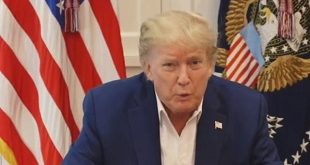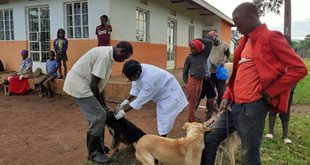
The Kabaamba III was aimed at capturing the rifles that Fronasa had handed to the UNLA following the merger after the defeat of Idi Amin in 1979. Twice, we had, unsuccessfully, tried to capture these guns ─ on the 6th of February, 1981 and, again, in Safari ─ 50 of 1983 ─ April-May. On the 20th of February, 1984, we had, successfully, captured the 760 rifles of Masindi and alot of other weapons, boosting the gun level of the NRA from 600 guns to about 1,400.
On the 30th of June, 1984, we had attacked Hoima and got another 60 or so rifles. We were, now, aiming for the guns of Kabaamba.
The reconnaissance had been done smartly by Mugume-Chagga, assisted by an insider, Tindibakyira. I, however, decided to postpone the operation from about November, 1984, to a later date because one of the cadres, Katabarwa, came with Eriya Kategaya and Ivan Koreta, from Nairobi and told me that he had established a peace dialogue with his military college-mate, Kagata Namiti, along with Paulo Muwanga who was the Vice-President of Obote.
He wanted us to allow him to pursue the peace talks in Kampala. My question to him was: “Why Kampala?” “Why not Nairobi or elsewhere?”
Katabarwa, however, was very firm that he was sure there would be no harm to him even in Kampala. Of course, I also had a lingering idea in my head about the idiocy and futility of even the confused UPC killing a peace envoy. It would not affect the struggle at all. Why would anybody do it?
I, therefore, allowed Katabarwa to go to Kampala and also came with a very large force, 1,500 that we had prepared to attack Kabaamba, to Galamba to be near Kampala so that Katabarwa could come back and consult us from nearby. Galamba is only 17 miles from Kampala if you use the main road. We must have arrived there at the beginning of December, 1984. We waited for a number of days without either Katabarwa or Kyaligonza, who was the one guiding those who went to or came from Kampala, showing up.
Instead, on the 10th of December, 1984, we were attacked by a UNLA force and we repulsed it. We shifted to a new position but in the same area, to an area below a two class-room primary school of that time known as Migadde Primary School. It was there, one morning, that Kyaligonza turned up and told us that Katabarwa had been killed. There was, therefore, no point in us continuing to stay in that area.
As we were preparing to leave that area and head for Kabaamba, we were attacked by a large UNLA force. They could not enter the camp, but they camped at the school above us. I did not want to continue with a protracted battle for positions where we wasted ammunition without profit. The battle had gone on for about 2 days but, in the night, the whole force pulled out and by morning, the long column was marching through the Masuliita peninsula, in the area of Bbaale and ended in Ssebuguzi, near Kapeeka.
There we stayed for a day or two as we prepared for the long walk to attack Kabaamba.
The long walk started on the afternoon of the 22nd of December, 1984. The large force started crossing the swollen Mayanja River at about 1400 hours, but could not all cross until 0020 hours on the 23rd of December according to the European counting of hours, the eighth hour of the night (shaha munaana gw’ekiro) according to the African counting of hours, of day and night.
The lap we had planned to cover in the night hours, was supposed to be up to Kyamusisi in Mityaana district where we had our small detach under John Kazzoora. It was only by 0800 hours (Shaha Ibiri z’akasheeshe) that we entered the Kiryookya village and turned to head for Kyamusisi. We had crossed Hoima Road at the Matte junction. All the villagers in the areas through which we passed, saw this huge column. Even one of our soldiers was captured by the UPC vigilantes. We were always monitoring Obote’s military radio-network and they started saying that a large guerrilla force, led by Museveni in person, is heading for somewhere. Where, exactly? Fortunately, on account of tightly holding information, the ordinary soldiers did not know.
The UPC, in their usual day-dreaming, started saying that we were running away ─ going to Congo, etc. I could, however, not take chances.
We arrived at Kyamusisi at about 1200 hours (Shaaha Mukaaga) on the 23rd of December, 1984. We cooked, ate, etc. This time, unlike 1983, we had planned better. We had pre-dumped maize grain and beans at the stop over points: Kyamusisi, etc. Soldiers did not have to carry the grain on the march.
Nevertheless, given the exposure by the daylight march and the solider who had been captured by the UPCs, I decided not to take chances. I decided to split the force into two. Seven hundred soldiers, all armed, had to march in the nights and attack Kabaamba by a surprise dawn attack as originally planned, while the larger force of 800 fighters, only 40% of them armed, would march in the opposite direction, in daylight hours, to confuse the enemy.
Possibly on Christmas day, Saleh’s force left by early evening and started on their marches by night. We stayed in the camp for one day. Then the following day, we started walking, by daylight hours, towards the Lukoola, the River Mayanja valley. We crossed Temanakali, between Nakwaaya and Bukomero and spent the night at Kamugabo.
The following day, we marched by day and camped at Kembogo. The operational commander of this force was Ahmed Kashiilingi.
 The Independent Uganda: You get the Truth we Pay the Price
The Independent Uganda: You get the Truth we Pay the Price



Thank you for sharing these insights. Reading from His Excellency The President of Uganda, Dr. Y.K. Museveni giving his narratives is informative and characterizes peace building mechanisms in the Uganda of the 1980’s. My questions though are around the cycles, most especially the operations, the President lays out. I am not refuting them but I am afraid what the President leaves out prompted to ask more questions than answers. The president writes about massive recruitment from Western Uganda. But, doesn’t he need to say something about the role of the Central region that set the theater out of which the war rolled out to cover Uganda? After all this very trek has significant meaning to many in the regions he is trekking through. Where can the use of radio, literature and pamphlets come in? My own father was one of the people who distributed the pamphlets! Thirdly, where do other fighters other than the Resistance Forces come in? Fourthly, where do we place the citizens who gave up cows, goats and money to sponsor the war? How would the president put these contributory phases in the narrative of liberation war? Thanks and hope to hear from you.
I hope his young trekkers will be able to take the heat after 2021. The president is inciting rebellion after his 2021 general Election. My humble advice to those young trekkers is not to allow to be misled into illegal and treasonous activities because some of us will get involved to counter it. Okay!, try and we see.